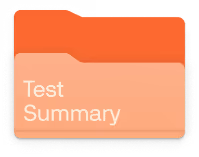
Key Benefits
- See your current egg supply to plan family-building and care.
- Spot diminished ovarian reserve earlier than symptoms appear, using age-adjusted thresholds.
- Flag PCOS-like ovarian activity when AMH runs high for your age.
- Guide IVF stimulation dosing and predict low or excessive ovarian response risk.
- Protect fertility after chemotherapy, radiation, or ovarian surgery by assessing reserve impact.
- Track reserve trends over time to inform egg freezing or treatment timing.
- Clarify expectations: AMH estimates quantity, not egg quality or natural conception chances.
- Interpret results best with age, antral follicle count ultrasound, FSH, and symptoms.
What is AMH (anti-Müllerian hormone)?
Anti-Müllerian hormone (AMH) is a signaling protein made by reproductive cells. In females, it is produced by the supporting cells that surround developing eggs in the ovary (granulosa cells of small preantral and antral follicles). In males, it is made by the testis very early in life (Sertoli cells during fetal and early postnatal stages). AMH enters the bloodstream and carries information about activity within these tissues. Biologically, it is a dimeric glycoprotein in the transforming growth factor-beta family.
Its key jobs are twofold. In the embryo, AMH guides sex-specific development by causing the Müllerian ducts to regress in males, allowing male internal reproductive organs to form. After birth, its main significance is in the ovary: AMH acts as a brake on the early wave of follicle growth and tempers responsiveness to follicle-stimulating hormone (FSH), helping pace egg maturation. Because many small follicles secrete AMH, the blood level reflects the size of the remaining follicle pool (ovarian reserve).
Why is AMH (anti-Müllerian hormone) important?
AMH (anti-Müllerian hormone) is a signal from the ovaries (and in early life, the testes) that reflects how many small, recruitable follicles are present. In women, it tracks ovarian reserve—the capacity to produce eggs now and in the near future—and indirectly ties to hormones that influence bone, brain, and metabolic health. AMH is fairly steady across the menstrual cycle, making it a useful snapshot of reproductive biology.
Reference ranges vary by age. For women, values that sit in the middle of the age-appropriate range generally indicate a healthy follicle pool; very low suggests limited reserve, very high often reflects excess follicle number.
When AMH is low in women, it usually means a smaller pool of follicles. Physiology shifts toward higher FSH, fewer recruitable eggs, and a shorter time to menopause. Cycles may remain regular until late, but over time lighter or skipped periods and menopausal symptoms can emerge as estrogen falls, with downstream effects on bone and cardiovascular risk. In boys, unexpectedly low AMH in infancy can signal impaired Sertoli cell/testicular function; in adult men it has limited routine use.
When AMH is high in women, it often mirrors polycystic ovary physiology: many small follicles that don’t ovulate regularly. This can show up as irregular cycles, acne or hirsutism, and is linked to insulin resistance and long-term metabolic risk. Rarely, markedly high levels occur with granulosa cell tumors. AMH naturally runs higher in adolescence and tends to fall during pregnancy.
Big picture: AMH integrates with FSH, LH, estradiol, inhibin B, and antral follicle count to map reproductive capacity. It connects fertility with whole-body health, signaling timing of menopause, PCOS-related metabolic risks, and the hormonal milieu that shapes bone, heart, and cognitive trajectories over the lifespan.
What Insights Will I Get?
AMH is made by the cells around early ovarian follicles (granulosa cells). In women, it indexes the size of the remaining follicle pool (ovarian reserve) and the ovary’s capacity to recruit eggs. Because ovarian function shapes sex-steroid output, AMH ties to reproductive timing and downstream effects on bone, heart, brain, and metabolism. In adult men, AMH is low and rarely informative.
Low values usually reflect fewer small follicles—reduced ovarian reserve. Common with aging or after ovarian injury. It signals fewer recruitable follicles, lower response to stimulation, and a shorter reproductive window; it does not measure egg quality. In children, low AMH can indicate impaired Sertoli/granulosa cell function.
Being in range suggests a sufficient pool of recruitable follicles and generally stable ovulation and cycle regularity. For age, “optimal” tends to sit mid‑range. Normal AMH does not guarantee fertility, and normal adult male values are typically low without clinical significance.
High values usually reflect many small follicles. In women this is common in polycystic ovary syndrome (PCOS), where follicle maturation stalls, ovulation may be infrequent, and androgen excess and insulin resistance can coexist. Markedly high AMH can also occur with rare ovarian granulosa cell tumors.
Notes: AMH is relatively cycle‑stable, declines with age, and falls in pregnancy and postpartum. Hormonal contraception and GnRH analogs can lower values by suppressing folliculogenesis. Assays differ across labs, so results are not interchangeable; interpretation should be age‑ and context‑specific.






.avif)



.svg)





.svg)


.svg)


.svg)

.avif)
.svg)










.avif)
.avif)
.avif)


.avif)
.png)


